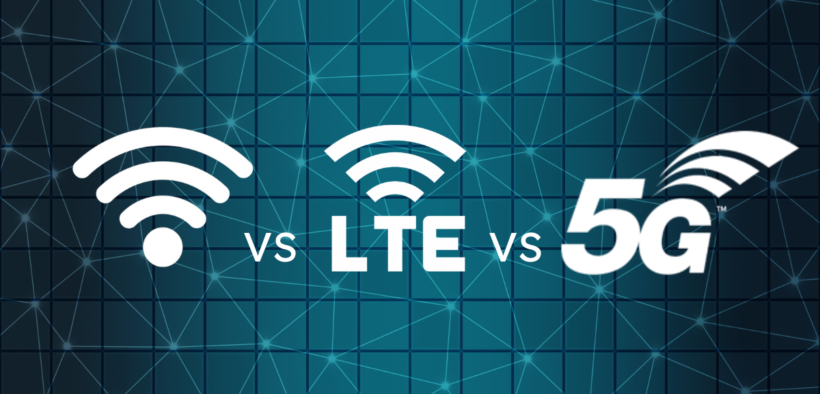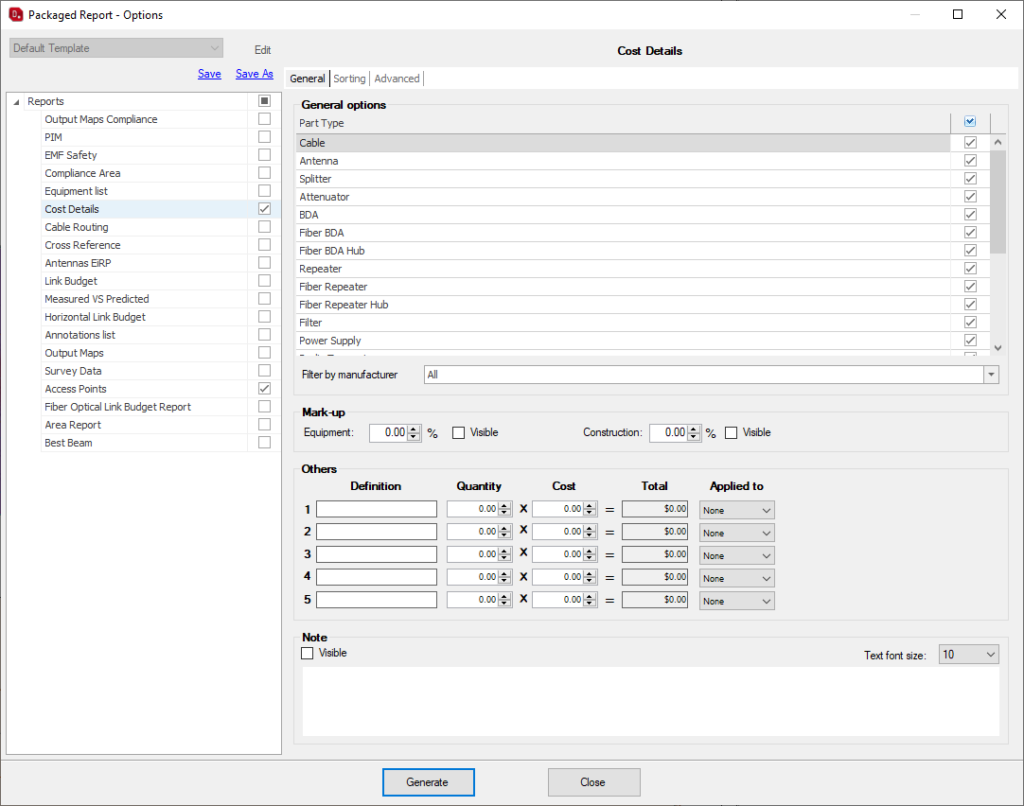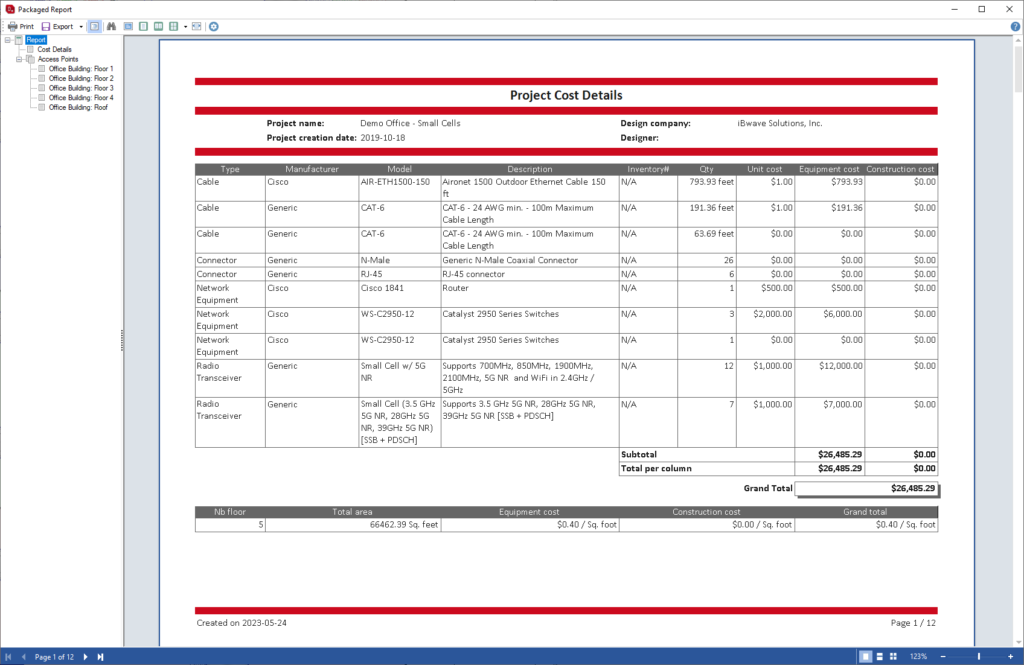Key Differences Between Designing Wi-Fi and Private LTE & 5G Networks
Share

As every network designer knows, there are basic similarities across Wi-Fi, 4G/LTE, and 5G private wireless networks. These similarities are often at the root of the assumption that the process of designing each of these networks is the same. But while the network design principles may be similar, there are some key differences for designing each network type. It’s important to understand those differences before tackling a network design and when selecting a network design tool to facilitate the design process.
An understanding of the design considerations and a design tool that can accommodate them results in a more efficient workflow and, ultimately, a more accurate design for each type of network.
Wi-Fi vs. Private LTE & 5G: Signal Interference
Signal interference is one of the key things network designers must consider whether they are designing in-building Wi-Fi networks or private cellular 4G/LTE & 5G networks. While Wi-Fi network designs may have to account for interference from other Wi-Fi signal sources within a building, private 4G/LTE and 5G networks must also consider potential interference from more powerful macro networks. This interference can come from one or more service provider macro networks that are providing service from outside of the private network coverage area. And this interference can affect both private network integrity and user experience.
Network designers must also consider interference from physical barriers. This is especially true in venues like stadiums where the placement of access points near physical barriers such as concrete columns and corners can affect signal strength on a floor, and concrete and steel floors can affect signal strength between higher and lower levels. While cellular networks are designed to penetrate physical barriers more effectively, the very nature of these large venues also requires designers to account for factors such as layout and building materials.
For both types of networks, the interference issue must be addressed during the design process. But mitigating macro network interference for private 4G/LTE and 5G networks is a little more complicated.
Wi-Fi networks simply require the designer to know the transmit power of competing Wi-Fi sources and design the network and the placement of access points around that. With LTE networks, designers must also account for reference signal power from the base station, which is contingent on available bandwidth. Designers also need to know the total power and bandwidth coming from an LTE channel to account for reference signal power.
Calculating Signal Interference is More Complex for 5G
Designing 5G networks is much more complicated. Bands are broken out into different subcarrier frequencies, among other complications. Many more factors come into play when calculating for what is ultimately going to be the signal quality in any given area of a private 5G network.
Signal interference from macro networks further compounds this complexity, making the network design process even more difficult. This is why iBwave imports CSV and other data formats of macro cell signal penetration data to enable dominance over macro plotting of the inbuilding network.
This ensures both faster and more accurate network design while minimizing the risk of under-design and overdesign. Thanks to the seamless integration between iBwave Design and iBwave Reach – our software for designing campus networks, you can design the highest quality indoor and outdoor wireless networks with one solution.
5G Adds Additional Technical Complications
5G further complicates the private wireless network design challenge with additional technical factors that must be considered during the design process.
These include:
Perform Necessary Calculations Automatically
Normally these factors present network designers with complex calculations to perform. The advantage iBwave offers is that network designers can simply input the information for the network they are designing, and the software will automatically perform the necessary calculations. Private cellular network design, therefore, happens more quickly, with fewer errors.

Report Generation Crucial for Additional Stakeholders
As network design is a process that goes beyond simply mapping coverage, one of the most crucial aspects to consider is report generation. Network designers must have ready access to comprehensive reports before deployment for review and approval by various stakeholders.
Use Cost Summaries, Access Point Placement, Survey Photos and Notes
In the case of enterprise private networks, different types of reports are needed to support, enable, and streamline the approval and deployment process. This can include:
Having the ability to generate reports with all the needed information is the key to streamlined network approval and deployment. To ensure the network design process runs smoothly from start to finish, iBwave includes the ability to generate reports such as Cost Detail reports, Access Point reports, and Annotation reports, which contain the key information different stakeholders need as part of the design and review process.


Meeting Regulatory Requirements and Industry Standards for Designing Wi-Fi, LTE & 5G Networks
Finally, cellular network designers must consider the regulatory requirements and industry standards they will be required to meet. For example, there are established signal strength maximums set by the Federal Communications Commission (FCC) that designers must meet. Industry standards provide guidelines to ensure network designs meet carrier requirements and deliver peak performance.
Load Testing and Balancing, Signal Strength, and Quality Evaluation
As a result, in-building cellular network design requires more rigorous testing and validation than Wi-Fi network design.
iBwave includes capabilities for network load projection, testing, and balancing during the design process, ensuring that the network can handle projected traffic while still abiding by FCC guidelines. Designers can also spot-check signal strength and quality throughout the entire network. And iBwave software meets the iBwave Design Standard (iBwave DS), ensuring networks function at a high level with any carrier.
iBwave Addresses Design Considerations for All Networks
While private wireless network designers must consider these and many more challenges before they start a design project, they must also choose tools capable of streamlining the design effort. The chosen design tool should simplify the design process as much as possible by only presenting designers with the decisions they need to make rather than the busywork needed to facilitate those choices, such as calculating the cellular numerology. In other words, one that can be easily adapted to address the complexity of the design challenge for the specific type of network being designed — Wi-Fi, 4G/LTE, or 5G.
iBwave puts this capability and more into designers’ hands. It streamlines and simplifies the network design process regardless of which type of private wireless network a designer is working on. It provides everything network designers need in one comprehensive solution they can rely on.
If you want to learn more about designing Wi-Fi and Private LTE & 5G Networks, check out our new Private Networks Certification and our course on Fundamentals of Private Networks!

- The Evolving Connectivity Landscape: Call for In-Building Design Validation from TRAI - April 25, 2025
- Making Smart Cities Smarter: The Role of Private Wireless Networks - January 25, 2024
- Building a Private Network: Step by Step - September 12, 2023


















